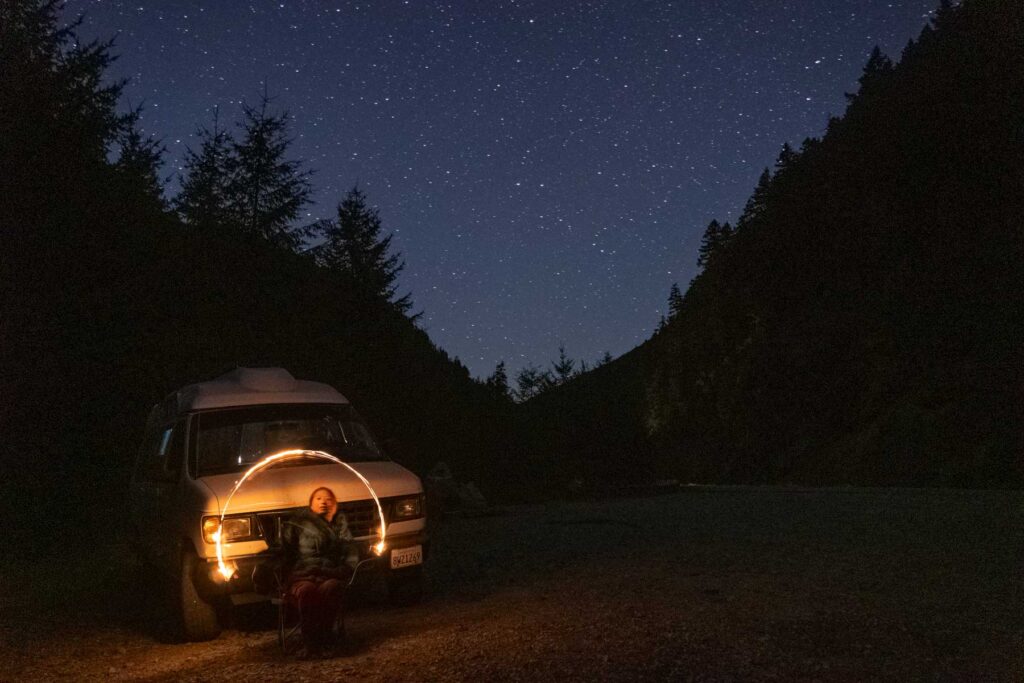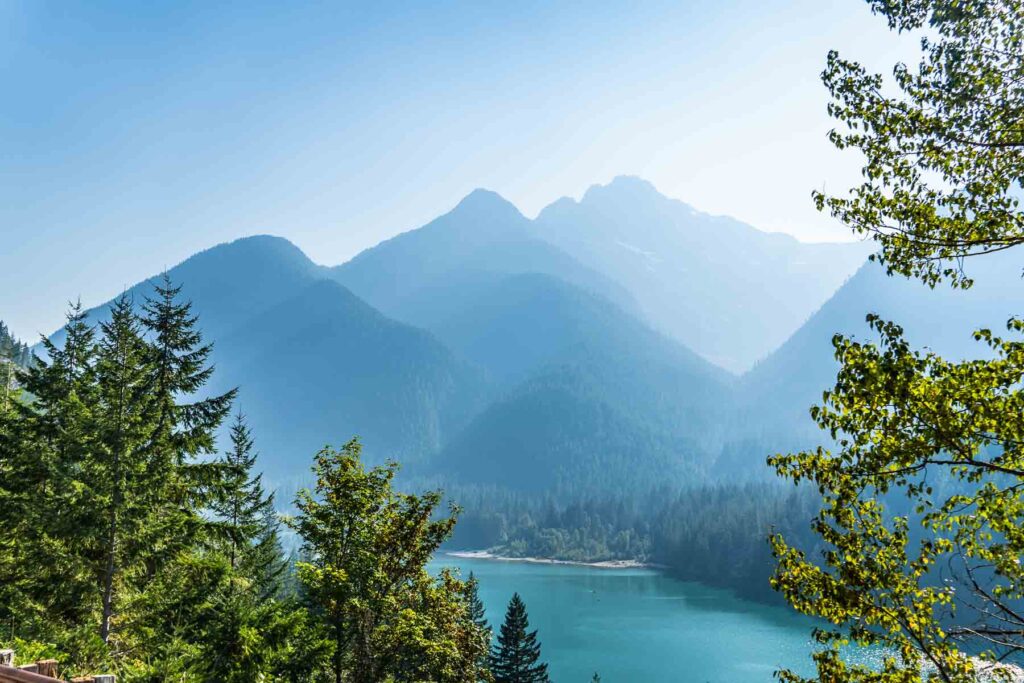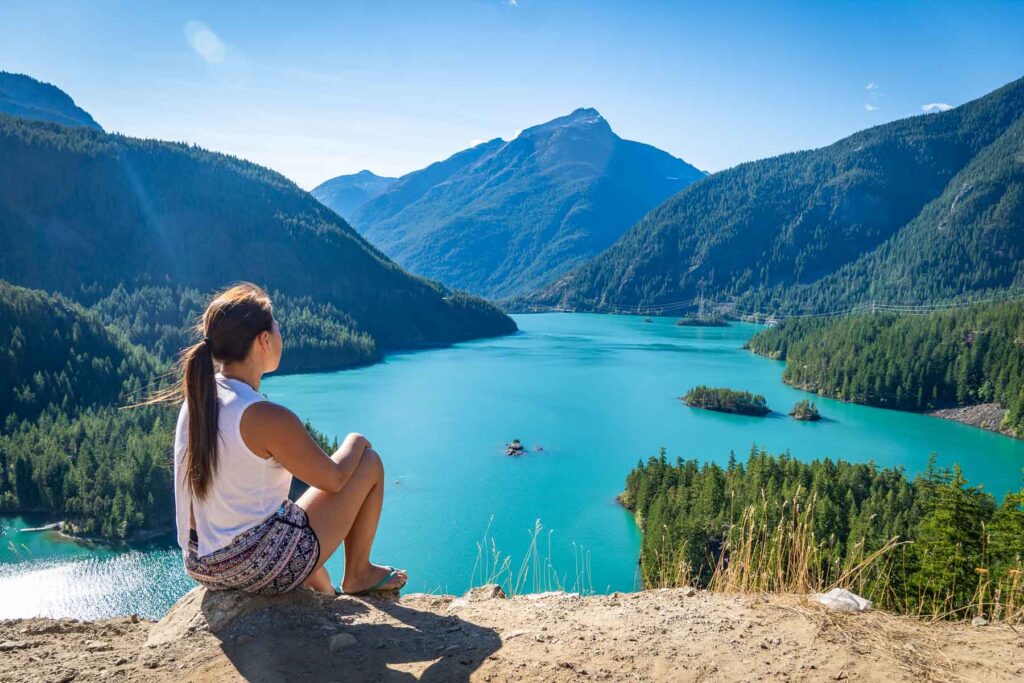Best Time to Visit North Cascades National Park (And Worst)

When is the best time to this underrated gem of turquoise lakes and wilderness in northern Washington State?
During my road trip adventures, I visited this Pacific Northwest national park twice in late summer. I loved it so much the first time, I had to return. The summer days were warm and sunny, the lakes freezing, and the evenings chilly but manageable. Unfortunately, I wasn’t as lucky on my second visit, as the views were marred by a deep haze caused by wildfire smoke.
The weather at North Cascades National Park can swing from warm and dry summers to heavily snowy winters. So, let’s take a look at the visitor seasons:
- Peak Season: June to September
- Shoulder Seasons: April to June and September to October
- Off-Peak Season: October to May
Now, let’s dive into the details about these seasons, special annual events, and a monthly climate breakdown. Whether you’re planning a day trip to North Cascades or an extended visit, hiking the Ross Lake Dam, or taking in the overlooks of Diablo Lake, this is the best time to visit North Cascades National Park.

Best Time to Visit North Cascades National Park
Best Time of Year to Visit
The best time to go to North Cascades National Park is June through September. These summer months are the only time of year you’ll find comfortable temperatures and a higher chance of clear skies. It’s a perfect time for hiking, camping, or kayaking deep into the beautiful backcountry wilderness.
Best Time for Good Weather
For the best weather, try to visit between June and September. During this time, you’ll enjoy lovely sunny days with temperatures around 60 to 80 degrees Fahrenheit.
Best Time for Smaller Crowds
The least crowded period at North Cascades National Park is during the off-peak season from late October through May. The colder weather and road closures due to snow make the park less accessible. However, those willing to brave the chill may share the park with literally zero other people.
That said, North Cascades is one of the most underrated parks in the country. Considering how beautiful it is, I’m shocked it remains relatively unknown, with traveler numbers rarely exceeding 10,000 per month, even during peak season.
Cheapest Time to Visit
When it comes to cost-saving, the off-peak season from late October to May is the budget traveler’s best friend. You can score lower rates for accommodation and flights, sometimes up to a 30% decrease compared to peak summer prices. With fewer tourists around, local businesses often have sweet deals and discounts to lure you in, although some may temporarily close up shop for the season.
Best Time for Stargazing
Quality stargazing in North Cascades National Park is best from summer to early October. That’s when you can avoid the rainiest season in Washington, typically from October through March. North Cascades is recognized as an International Dark Sky Park, ensuring minimal light pollution.

Worst Time to Visit North Cascades
The worst time to visit North Cascades National Park is during the deep winter months, from November to April. These months see heavy snowfall and severe weather, which leads to road closures and limited access to many parts of the park. With sub-zero temperatures, outdoor activities become uncomfortable and potentially dangerous.
Park Closures
North Cascades National Park is technically open 24/7, year-round. While the park itself never shuts its gates, most roads and trails are inaccessible during the entire long winter. For instance, Highway 20, the main national park bypass road, is typically closed from September to May. However, you can go in for winter snow activities.

Seasons at North Cascades National Park
Spring (March-May)
With the snow gradually melting, spring in North Cascades National Park reveals green meadows dotted with colorful wildflowers. This season sees still chilly temperatures ranging from 40s to 60s Fahrenheit. The quiet trails offer a peaceful hiking experience, free from the already little summer crowds.
Springtime can be unpredictable. While the lower elevations start to thaw, higher elevations may still see snowfall, with many trails and roads remaining closed till late May or even early June.
As the snow melts, new vegetation emerges, drawing in animals like black bears, mountain goats, and mule deer. Plus, migratory birds begin their comeback to the park.
Summer (June – August)
Summer is the only season where the weather is near perfect, with temperatures around the pleasant 70s to low 80s Fahrenheit. You can enjoy blue skies, mild evenings, and the occasional afternoon shower.
The park is fully awake in summer. Snow has mostly cleared at all but the highest elevations, opening up all roads, trails, and campsites. This accessibility and the splendid weather make it the busiest season.
Alpine meadows explode with a palette of wildflowers, and wildlife is quite active too. Water enthusiasts would love paddling on the brilliant turquoise waters of Diablo Lake. And if you’re into bird-watching, summer is the prime time.
As I’ve experienced, some summers, wildfires can cause air pollution to be unhealthy and the entire area to be covered in haze and smoke.

Fall (September – November)
As the summer crowds recede, the weather transitions to cooler temperatures from the low 70s in early September to a crisp 40s by late November.
The real charm of fall lies in the explosion of colors. The lush green landscapes give way to a riot of reds, oranges, and golds as trees like cottonwoods, aspens, and maples prepare for the long winter.
As for wildlife, fall is the mating season for elks. Listen for their distinctive bugling calls echoing through the forest. And watch for bears as they actively forage to prepare for hibernation.
Hiking in the fall is a treat, but high-altitude trails may already be inaccessible due to early snowfall. As fall progresses, visitor services begin to scale down, and by mid-October, many facilities close for the winter.
Winter (December – February)
Winter in North Cascades National Park is harsh and a deep snow-blanketed landscape. Temperatures plunge, often dipping below freezing, with daylight hours considerably shorter. Some months, there are actually zero recreational visitors the whole month!
Most park roads close, but snowshoeing and cross-country skiing are still possible. Even though it is extremely rare, one of the standout features of winter is the opportunity to catch the ethereal Northern Lights.
During winter, services and facilities are extremely limited. Many campgrounds and visitor centers close for the season, and road conditions, if open, can be challenging due to snow and ice.

North Cascades Weather By Month
This park is known for its diverse weather patterns that vary significantly from month to month. Here is a breakdown of the average high and low temperatures and precipitation at North Cascades National Park.
In total, the park receives an impressive 109.5 inches of precipitation annually. That’s a lot of rain, snow, and hail!
| Month | Average High (°F) | Average Low (°F) | Average Precipitation (inches) |
|---|---|---|---|
| January | 39 | 30 | 18.1 |
| February | 43 | 32 | 14.5 |
| March | 49 | 34 | 11.7 |
| April | 57 | 38 | 6.5 |
| May | 64 | 44 | 3.4 |
| June | 69 | 48 | 2.8 |
| July | 76 | 52 | 1.9 |
| August | 76 | 53 | 2.4 |
| September | 70 | 49 | 3.5 |
| October | 57 | 43 | 9.0 |
| November | 45 | 36 | 18.9 |
| December | 39 | 31 | 16.3 |
Best Time of Day to Visit
Midday is the best time of day in North Cascades National Park. The sun is at its peak, bathing the glacial lakes in an intense, piercing light that makes the colors so blue. Plus, the weather is so nice for hiking and paddling on the waters.
Here’s a quick run-down of what to expect throughout the day:
- Morning (6 AM – 11 AM): Morning fog often blankets the park. It’s probably still chilly in the early mornings, even in the summer.
- Midday (11 AM – 3 PM): I love looking at the lake at this time, as the sun illuminates the park’s natural features. The warm days are great for the great outdoors.
- Afternoon to Evening (3 PM – Sunset): As the sun sets, head to an overlook for the end of the day.
- Night: As darkness descends, stay out to stargaze. North Cascades is a beautiful place for camping. Even in summer, I was wearing a down jacket at night.

Special Events or Festivals
Here’s a list of some special events and festivals happening in or near North Cascades National Park:
- Skagit Eagle Festival: Although they no longer host this festival, you can still see eagles every winter here.
- Neotropical Bird Migration: Around mid-to-late spring, the park becomes a bird-watching paradise with various migratory birds passing through.
- Small Town Holidays: This cozy event happens in November and is chock-full of holiday-themed fun.
- The Illuminight Winter Walk: Held in January, this free event is all about lights, lanterns, and winter wonder in downtown Mount Vernon.
- The Wild & Scenic Film Festival: Grab some popcorn and settle down in October for various outdoor and environmental films.
- Skagit Valley Highland Games & Celtic Festival: Tartan up and join the fun at Edgewater Park in Mount Vernon, WA, every second weekend of July.
- Rhythm & Blues Festival: Get ready to groove at this 3 day festival in July with on-site camping, food, and live music.
Don’t close that tab just yet…Where to Next in Washington?
I’ve vanlifed through Washington on two extensive road trips, once just up and down the coast and another from the east to west. If you happen to be traveling anywhere in Washington, check out these other destination itineraries.
- The Best Way To Spend One Day In North Cascades for First-Timers
- Perfect One Day in Olympic National Park Itinerary for First-Timers
Catherine, a seasoned travel writer, has lived in 4 different states and explored 36 states and 28 national parks. After spending two years embracing van life, she's now dedicated to sharing her vast knowledge of day trips across America. Catherine's other works has been referenced in major publications like MSN, Self, and TripSavvy.
| MY FAVORITE TRAVEL RESOURCES |
✈️ Find amazing guided tours and experiences with Viator to maximize your time! 🏘️ Plan ahead and secure your accommodation with Booking.com in advance. 🧾 Rent a car with Discovercars in advance and get the best prices for your day trip adventures. |

